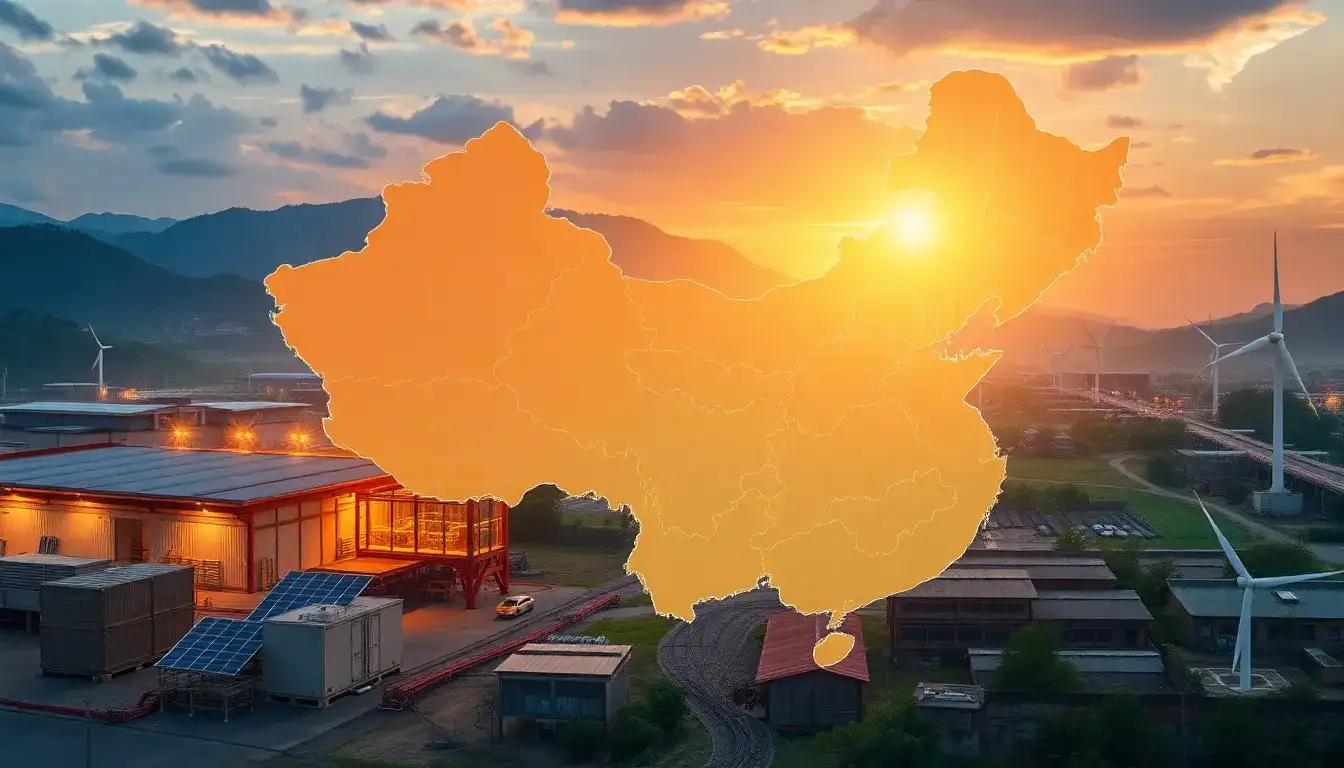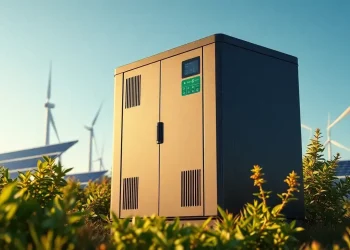
New Developments in Energy Storage Provinces!
Date: March 27, 2025
According to reports from the China Energy Storage Network, the government work report for 2025 has highly recognized the remarkable achievements of China’s energy storage industry and has outlined a clear direction for its future development. Energy storage, as a cornerstone of the new energy system and a driving force for the green and low-carbon transition of energy, is becoming an emerging growth point for regional economies and a key component in enhancing productivity.
During the National Two Sessions, a significant platform for collective brainstorming and collaboration, officials and representatives from provinces with developed energy storage industries focused on core topics such as “expanding the scale of the energy storage industry” and “building a competitive energy storage industrial cluster.” They engaged in in-depth discussions and actively contributed ideas based on their respective regional resources and industrial development realities. This series of initiatives not only highlights the important position of the energy storage industry in the national energy strategy but also injects strong momentum and confidence into the future development of the energy storage industry in major provinces and across the country.
Energy Storage Performance Report for Xinjiang in 2024
According to incomplete statistics from the CESA Energy Storage Application Association’s industrial database, from January to December 2024, Xinjiang exhibited strong growth in the new energy storage sector, with an annual newly installed capacity of 5.82 GW/20.92 GWh. This accounted for 19.09% of the total capacity, maintaining its position as the leading province in the nation. Additionally, its project reserves reached 2.62 GW/10.45 GWh, representing 19.13% and ranking second nationwide, forming a dual-driving pattern of “leading new installations + strong project reserves.” On the policy front, Xinjiang has implemented the “Implementation Opinions on Accelerating the Development of New Energy Storage,” which sets clear goals for new energy storage installation during the 14th Five-Year Plan and significantly increases the mandatory energy storage ratio for new energy projects to 15%-20%. Supporting investment subsidies, tax benefits, and loan interest discount policies have effectively stimulated social capital participation.
Technological innovations and industrial chain cultivation have also made breakthroughs, with advancements in pilot applications of cutting-edge technologies such as flow batteries and compressed air energy storage. Companies like TBEA have tackled technical challenges in adapting to high-altitude desert environments. A preliminary industrial chain has been established, encompassing “battery manufacturing – system integration – operation and maintenance services,” attracting leading enterprises such as Sungrow Power Supply and BYD to set up production lines, accelerating local capacity aggregation and laying a solid foundation for high-quality industrial development.
Development Directions for 2025
In 2025, Xinjiang’s energy storage projects will cover various types, including lithium iron phosphate batteries and vanadium flow batteries. The demand for grid-connected energy storage is expected to significantly increase, with large-scale storage facilities being constructed in conjunction with new energy bases, such as the Xinjiang Huadian Urumqi photovoltaic base project. Moreover, Xinjiang has attracted several central enterprises to invest in new energy storage and other sectors, with plans for new battery factories expected to achieve a total production capacity of 30 GWh in 2024. To support the development of the energy storage industry, Xinjiang has introduced policies for market transactions, time-of-use pricing, and capacity compensation, facilitating the construction and operation of storage projects and enhancing the utilization rate and economic viability of energy storage facilities.
Representative Enterprises
In 2024, TBEA’s energy storage sector made significant progress. Leveraging its deep experience in power equipment, the company continues to expand its energy storage business, offering products across large-scale storage systems, commercial and industrial storage, and residential storage. TBEA is actively promoting technological innovations in energy storage, improving system integration efficiency, and has successfully won bids for numerous domestic and international energy storage projects. Despite facing challenges such as intensified industry competition, TBEA’s energy storage sector maintains a steady growth trend. During the National Two Sessions, Zhang Xin, Secretary of the Party Committee and Chairman of TBEA, presented four proposals, including the construction of a logistics corridor in Xinjiang, the establishment of a large green energy base, support for small and medium enterprises in high-quality development, and enhanced national policy support for technological investment and talent development in Xinjiang.
Energy Storage Performance Report for Jiangsu in 2024
According to incomplete statistics from the CESA Energy Storage Application Association’s industrial database, Jiangsu Province added 6.41 GW/13.12 GWh of new energy storage capacity from January to December 2024, accounting for 11.97% of the national total, ranking third in the country. The province has 1.69 GW/5.87 GWh of new energy storage projects under construction, also ranking third nationally. In the commercial and industrial energy storage market, Jiangsu’s independent commercial storage station projects reached a total of 697.59 MW/1699.57 MWh, representing 33.53% of the capacity. Notably, the application of energy storage in steel manufacturing has yielded significant results, effectively reducing electricity costs for steel companies while ensuring stable power supply. As the second-largest steel-producing province in the country, Jiangsu’s demand for energy storage is becoming increasingly urgent. Additionally, the Jiangsu Development and Reform Commission has launched the “715” power supply protection project, aiming to accelerate the construction of 41 grid-side energy storage projects to meet peak electricity demands, providing strong policy support for the robust development of the energy storage industry.
Development Directions for 2025
For 2025, Jiangsu has outlined its energy storage development plan in the “Action Plan for Accelerating the High-Quality Development of the New Energy Industry Cluster,” jointly issued by the Jiangsu Ministry of Industry and Information Technology and six other departments. This plan aims to optimize the policy system for new energy industry development and promote the high-quality growth of new energy industry clusters, setting targets for significant breakthroughs in key technology fields, including energy storage, by 2027. To facilitate rapid development of the energy storage industry, the plan proposes cultivating ten leading enterprises with ecological influence and international impact, covering nine major actions, including key technology breakthroughs, innovation platform construction, product promotion, enterprise cultivation, industry cluster development, smart transformation, green manufacturing promotion, enhancing industrial foundational capabilities, and expanding overseas markets.
Representative Enterprises
In 2024, Hive Energy achieved significant success in the energy storage battery sector. The company increased its research and production efforts, launching several innovative energy storage battery products, with overall battery shipments exceeding 27.5 GWh, a year-on-year increase of 118%. Although the specific shipment volume for energy storage batteries has not been disclosed, market performance has been positive, and the products are widely recognized. The company successfully mass-produced the industry’s first large-capacity energy storage cell, the L500 series, using short-blade thermal composite technology, and plans to mass-produce a 770 Ah ultra-large capacity cell in the second quarter of 2025, benefiting from high efficiency, low cost, and long lifespan.
Conclusion
The energy storage industry is at the forefront of the new energy revolution, driven by technological innovation, policy mechanisms, and regional collaboration, and is rapidly advancing toward high-quality development. From breakthroughs in hundred-megawatt technologies to the layout of trillion-yuan industry clusters and the exploration of market-oriented electricity systems, China’s energy storage industry has established a multidimensional support system comprising technology, policy, and market. The “Action Plan for High-Quality Development of the New Energy Manufacturing Industry,” jointly issued by the Ministry of Industry and Information Technology and seven other departments on February 17, 2025, not only outlines the strategic goal of showcasing international competitive advantages across the entire chain by 2027 but also injects “high-end, intelligent, and green” genes into the Chinese energy storage industry by nurturing ecological-led enterprises, enhancing the resilience of the industrial chain, and improving market standards.
We have ample reasons to believe that as technological breakthroughs overcome cost barriers, markets break down supply-demand barriers, and regional collaborations strengthen resilience, energy storage will become the “accelerator” of the new energy revolution. This transformation is not only a reshaping of the energy structure but also a vivid demonstration of the leap from Chinese manufacturing to intelligent manufacturing.

 Weekly Subscription
Weekly Subscription





